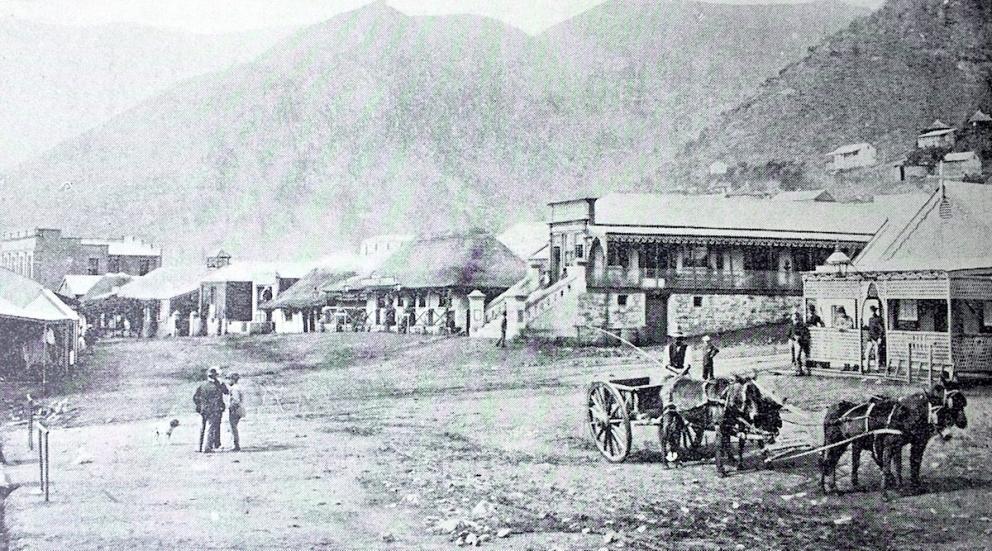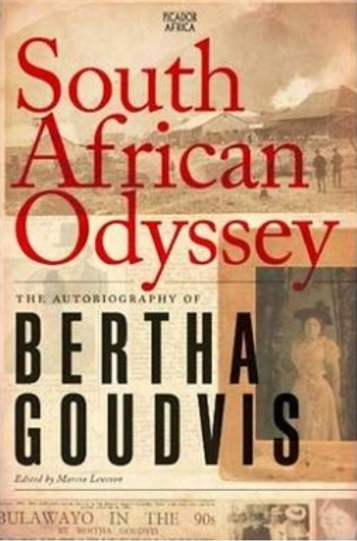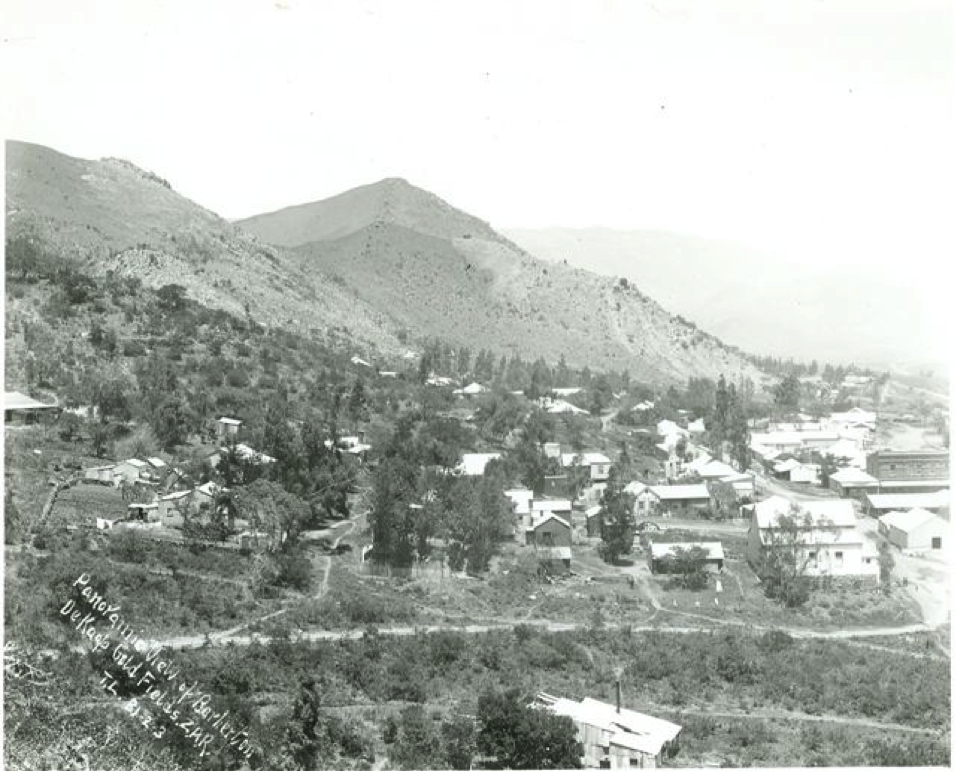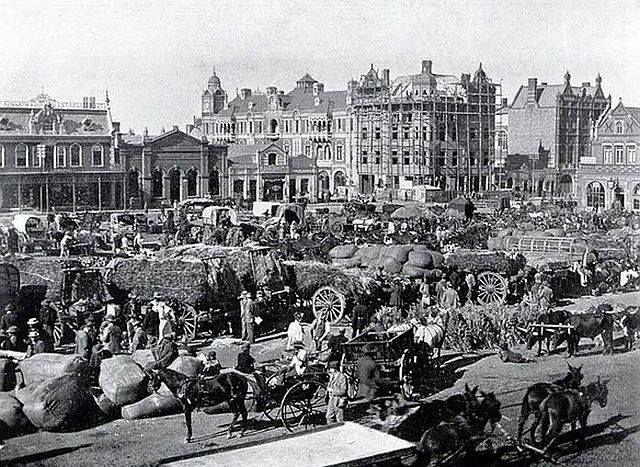
This is a fascinating first person autobiographical account of one woman’s experiences and life in Southern Africa between the early 1880s and her final years in Johannesburg in the 1960s. Bertha Goudvis enjoyed a long and arduous life (1876 – 1966) during years of turbulent change and several wars. She was a first hand observer of the colonial world and lives on to comment on city life in modern Johannesburg.
This is a particularly important book in giving sketches of Johannesburg in 1893 and in 1911 but there is much more besides.
Book Cover
Bertha was born in England; her maiden name was Bertha Cinamon (an unusual surname) and arrived in South Africa in the early 1880s at the age of five. Her father was an itinerant trader or as colloquially called, a smous who tried his hand as hotel keeper, gold prospector and inventor. The growing family lived a hand to mouth existence wandering between various South African towns, never having much luck. Bertha though observed and had a retentive memory and this life became the raw material for her writing. They were a clearly close knit, sharply intelligent Jewish family who discussed affairs of the day with a keen acuity. From her own account, Bertha adored her mother but was both terrified and exasperated by her father, a dreamer and inventor who ruled as a small time autocrat. He was a dreamer who always bet on the next big opportunity but his gambles seldom came off and the family struggled.
Bertha was clearly a gifted child and a compulsive reader who read all and everything with insight and understanding from a young age. It seems she was largely self educated (she had very little formal schooling) and had an equally compulsive urge to write. Although in her day Bertha did achieve celebrity as a journalist, short story writer author and a playwright, after her death her fame faded. Marcia Leveson has brought this gem of an autobiography to life and light; although published by Picador in 2011, this fascinating memoir of Bertha Goudvis has already moved into out of print status and the price of a copy has soared from the original R200 for a paper back to several hundred rand via Amazon. It is difficult to know when Bertha wrote her autobiography as at times the descriptions seem to come across with the voice of a precocious child and at other times there is a more reflective adult view of her childhood.
This is an important memoir because here is a first hand account of life in Barberton during the years of the gold rush (see main photo and below). Bertha’s father became rich but only in paper shares and did not sell at the right moment. She went on to live in Johannesburg between 1893 and 1894 and provides a thumb nail sketch of the look of the Market Square, Pritchard Street as the main shopping street and the three theatres of the town.
Early photo of Barberton
Old photo of Market Square Johannesburg
The Cinamon pater must have had wanderlust as he then moved on to the new country of Rhodesia and the family trailed after him to Bulawayo. Here is a first hand account of the Jameson Raid and what it was like to live through the Matebele uprising of 1896, from the perspective of a teenager, and she had her first newspaper account published by the Daily Graphic. Bertha married young. Her husband was a Dutch Jew, Lucas Goudvis and the memoir moves on to young married life as not very successful hoteliers in Gwelo and later Lorenço Marques. Here is a first hand account of Kruger (he wore gold sleeper earrings) departing for Europe via the Portuguese colonial port. Bertha’s sympathies clearly lay with the Boers and she organized Christmas cheer for the internees.
The real interest of this memoir is that the men of the family kept on moving. The wives and children followed. It was a time when women were dependent on their menfolk through all the ups and downs of frontier life, but had to be resourceful and used their intelligence to gain an impressive degree of independence. Hence after the Boer War, Bertha moved back to Durban and managed to get a toe hold in the newspaper world becoming a correspondent and columnist. She loved the theatre so writes about first ladies and actors she interviewed. She does not give precise dates, but at some point the family then moved to Vryheid and northern Natal to try their hand at inn keeping and lived at Louwsberg between 1906 and 1911. Her insights of the political figures she encountered such as Louis Botha and anxieties during the Bambatha rebellion have an immediacy and give a sharp portrayal of personalities and crises.
The Goudvis family moved back to Johannesburg in 1911 and the final part of the memoirs covers the Joburg years, where her husband tried his hand at running a bioscope in Braamfontein (the Lyric) and she became a theatre fanatic, newspaper woman and columnist. The final part of the book is a condensed abridgement of her later life and the lives of her sons through the two world wars in addition to recounting her own success as a playwright and author. By this point one is really engaged in the life of this extraordinary pioneer and one cries out for more detail and more of her humourous wry comments about people, famous infamous and ordinary, politics and literature. Bertha rings down her curtain in 1964 and died in 1965. The book carries a glossary of South African and Jewish terms and the books has been indexed.
I would have liked the editor to have provided more footnotes with background and fuller details about the characters who cross the path of Bertha Goudvis. She was a woman of her times but also rose above the limitations of a peripatetic life to make a literary name for herself. There is a deserved entry on Bertha Goudvis on Wikipedia.
Kathy Munro is an Honorary Associate Professor in the School of Architecture and Planning at the University of the Witwatersrand. She enjoyed a long career as an academic and in management at Wits University. She trained as an economic historian. She is an enthusiastic book person and has built her own somewhat eclectic book collection over 40 years. Her interests cover Africana, Johannesburg history, history, art history, travel, business and banking histories. She researches and writes on historical architecture and heritage matters. She is a member of the Board of the Johannesburg Heritage Foundation and is a docent at the Wits Arts Museum. She is currently working on a couple of projects on Johannesburg architects and is researching South African architects, war cemeteries and memorials. Kathy is a member of the online book community the Library thing and recommends this cataloging website and worldwide network as a book lover's haven.



